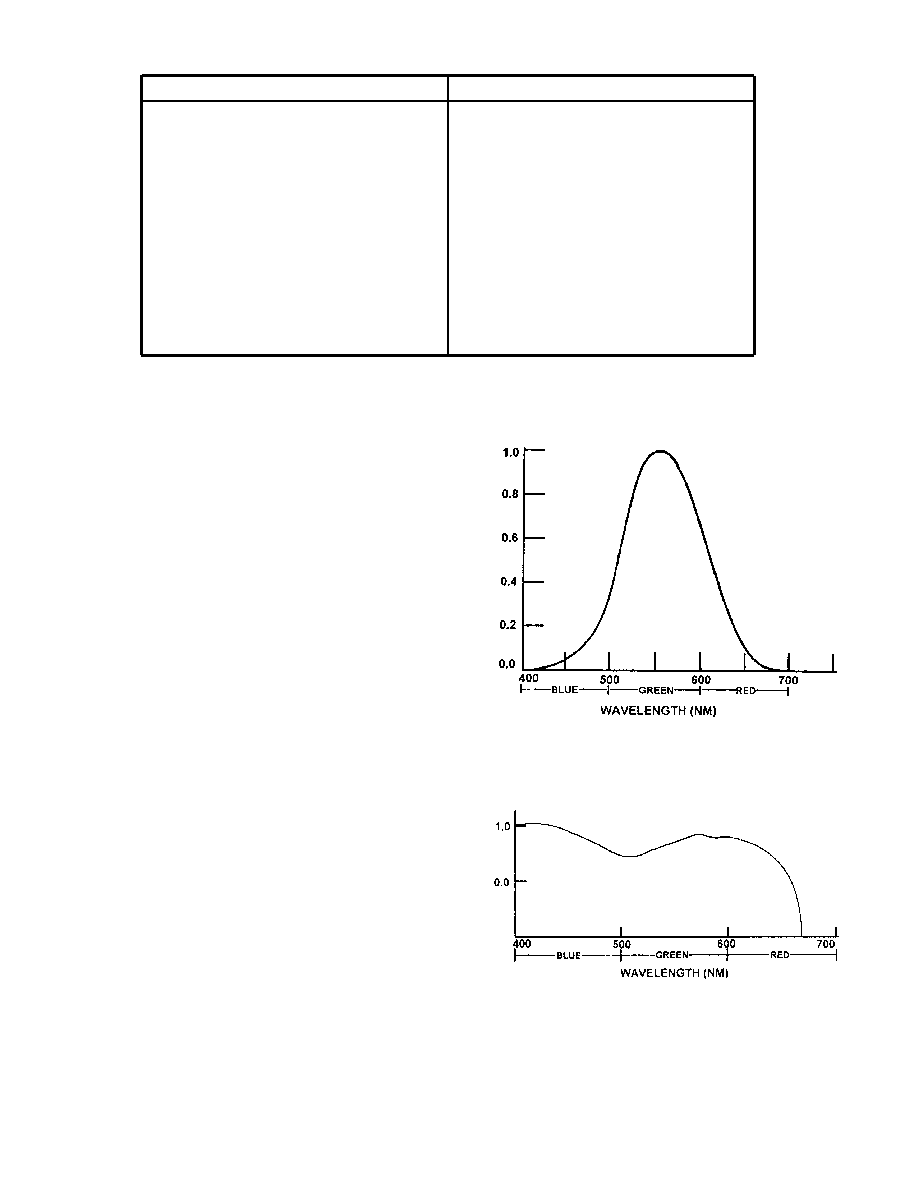
DOFMaster
for Windows
On-line
Depth of Field
Calculator
DOFMaster for Mobile Devices
On-line
Depth of Field
Table
Hyperfocal
Distance Chart
Articles
FAQ
Recommended
Books
Support
Contact
Links
Home
for Windows
On-line
Depth of Field
Calculator
DOFMaster for Mobile Devices
On-line
Depth of Field
Table
Hyperfocal
Distance Chart
Articles
FAQ
Recommended
Books
Support
Contact
Links
Home
As an Amazon Associate I earn from qualifying purchases.
![]()
colors in the print; for example, a yellowish green No.
cyan filter lightens blue and blue-green and darkens
light red and orange.
green, and blue objects in the same relative values as the
eye sees them. The human eye is much more sensitive
to green than it is to blue and red, and these colors look
darker to the eye than green (fig. 3-2). Panchromatic
film is more sensitive to blue and violet and looks lighter
than green in a black-and-white print. This high
sensitivity to blue and violet causes an overexposure to
the film of blue objects as compared to green objects.
This overexposure causes a dense negative image that
brightness relationship as seen by the human eye.
brightness relationship with panchromatic film. The
yellow in the filter absorbs the ultraviolet radiation and
some of the blue light, while the green in the filter
Basic Photography Course

As an Amazon Associate I earn from qualifying purchases.
WWW.DOFMASTER.COM
© 2006 Don Fleming. All rights reserved.
© 2006 Don Fleming. All rights reserved.